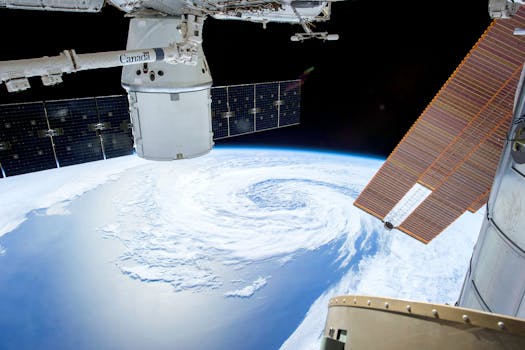GEO Satellites: Understanding the Technology and Applications of Geostationary Orbit Satellites
GEO satellites are a type of satellite that orbits the Earth at an altitude of approximately 36,000 kilometers, remaining stationary above a fixed point on the equator. This article explores the technology and applications of GEO satellites, including their use in telecommunications, weather forecasting, and Earth observation.

GEO Satellites: Introduction to Geostationary Orbit Satellites
GEO satellites, or geostationary orbit satellites, are a type of satellite that orbits the Earth at an altitude of approximately 36,000 kilometers, remaining stationary above a fixed point on the equator. This unique characteristic allows GEO satellites to provide continuous coverage of a specific region, making them ideal for a variety of applications, including telecommunications, weather forecasting, and Earth observation.
How GEO Satellites Work
GEO satellites work by orbiting the Earth at a speed that matches the planet’s rotation, allowing them to remain stationary above a fixed point on the equator. This is achieved by placing the satellite in a geostationary orbit, which is a circular orbit that lies in the equatorial plane of the Earth. The satellite’s orbit is synchronized with the Earth’s rotation, allowing it to remain stationary above a fixed point on the equator.
Applications of GEO Satellites
GEO satellites have a wide range of applications, including telecommunications, weather forecasting, and Earth observation. In telecommunications, GEO satellites are used to provide broadband internet access, television broadcasting, and mobile phone connectivity. In weather forecasting, GEO satellites are used to monitor weather patterns and provide early warnings for severe weather events. In Earth observation, GEO satellites are used to monitor the Earth’s climate, track natural disasters, and provide data for agricultural and environmental monitoring.
Benefits and Challenges of GEO Satellites
GEO satellites offer several benefits, including high-resolution imagery, continuous coverage, and real-time data transmission. However, they also pose several challenges, including high launch costs, limited bandwidth, and orbital congestion. Despite these challenges, GEO satellites remain a vital component of modern satellite technology, providing critical services and applications that support a wide range of industries and communities.
Future of GEO Satellites
The future of GEO satellites is expected to be shaped by advances in technology, increasing demand for satellite services, and evolving regulatory environments. Next-generation GEO satellites are expected to offer higher-resolution imagery, faster data transmission rates, and improved navigation and communication capabilities. Additionally, the development of new satellite constellations and the integration of GEO satellites with other types of satellites, such as low-Earth orbit satellites, are expected to further expand the capabilities and applications of GEO satellites.